The traditional British Christmas might look like Midnight Mass, roast turkey and a Boxing Day game of scrabble but, around the world, Christians celebrate the birth of Jesus in many different ways – and even on completely different days
Lebanon
Rouba Yammine is leader of Faith Family Church in Beirut
Christmas isn’t just a holiday, it’s a tender weaving of faith, family and ancient memory. As December descends, the mountains and cities alike shimmer with light, but beneath the glow lives something deeper: the steady heartbeat of tradition, pulsing with centuries of devotion.
It all begins on 3 December, with the Feast of St Barbara, Eid el Burbara, a day as old as the hills. Children dress in costumes and sing door-to-door, echoing the saint’s escape from persecution. Her story – a young woman who fled for her faith and hid among the fields – has taken root in our soil and souls.
In her honour, Lebanese families soak wheat, lentils or chickpeas on beds of cotton, letting them sprout by Christmas Day. These delicate green shoots find their place beside the nativity scene, a quiet sign of life emerging from waiting; of faith that germinates even in hiding.
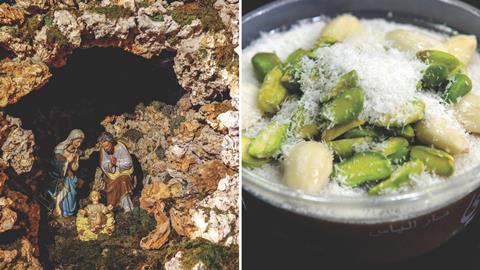
The Lebanese nativity, or manger, often finds its home in a cave instead of a wooden stable – which glows softly with candlelight. For many Lebanese families, setting up the manger is the beginning of Christmas, more than the tree or the gifts. It’s sacred storytelling – a reminder that the divine often chooses the simplest dwelling.
And then there’s meghli, the dessert that fills homes with warmth and spice. A brown rice pudding infused with caraway, cinnamon and anise, it is traditionally prepared to celebrate the birth of a child. At Christmas, it becomes the taste of the Nativity itself – the sweetness of a saviour born into our world. The pudding’s earthy colour recalls the soil, while the nuts and coconut symbolise new life. Every spoonful carries the joy of welcome, the fragrance of faith and the memory of mothers rejoicing at life’s arrival.
Lebanese Christmas traditions are more than customs; they are living prayers, each whispering the same truth: that light can bloom in darkness, and hope can take root even in winter’s chill. Here, amid mountains and cedar trees, we still believe in the miracle – Emmanuel, God with us – not as a story from long ago, but a presence dwelling quietly in our midst.
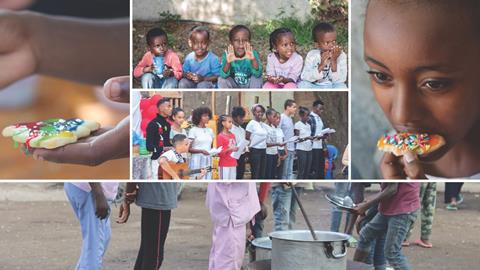
Ethiopia
Rachel and Argaw Ayele run Ebenezer Grace Children’s Home (esmafrica.org) in Hawassa
Ethiopian Christmas usually lands on 7 January each year.
Traditionally, Orthodox Christians fast for 40 days in the run-up to Christmas, foregoing animal products such as meat, dairy and eggs. Then on Christmas morning, they dress in white traditional clothing and head to church early in the morning, greeting each other with blessings of peace on the way.
Pentecostal Christians go to church early – at around 3am – to proclaim that Jesus has come! After church, Ethiopians enjoy a simple family meal together – usually Siga Wot, a spicy beef stew, eaten with injera, a fermented flatbread.
At Ebenezer Grace, the children’s home that we run, this is done on an industrial scale. A couple of days before, we bake hundreds of cookies, which the kids and staff decorate with icing and sprinkles. As a special treat, the older girls get their hair done at the local salon, and help the mamas do the younger girls’ hair, which looks just as good. We try to give each person an outfit at Christmas – sometimes ahead of time so they can wear it for the celebration.
On the morning, the mamas and older kids are up at the crack of dawn to help finish the stews they started cooking the day before. At around 10am, we gather to sing songs and share the story of Jesus’ birth. Some of the children lead worship, perform a drama or help MC the event. After, we play games and eat, followed by cookies and some delicious Ethiopian coffee. The rest of the day is spent dancing, trying on new clothes and having fun.
Whether Pentecostal or Orthodox, Ethiopians do not have Christmas trees, nobody decorates their home and there is no Santa. Ethiopian Christmas celebrations place almost no focus on giving or receiving gifts. It’s completely nonmaterialistic; the beauty of the holiday is found in being together and remembering Jesus’ birth.

Argentina
Nick and Catherine Drayson served as missionaries with the Church Mission Society in the Argentinian province of Chaco for decades
Argentina has a majority Catholic culture, so Christmas is generally celebrated with a family meal (usually asado of beef) on the evening of 24 December and, afterwards, by attending Midnight Mass.
The indigenous South American people, however, traditionally celebrate Christmas on 25 December, probably influenced by the English missionaries who first brought Christianity to them. In the Chaco, Anglican Christians mark Jesus’ birth with a very early church service around 6am. Then the whole village turns out for a very English-looking sports day that includes the three-legged race, egg and spoon, sack race, tug of war etc. The prizes range from sweets to choice cuts of beef, which are then shared at a huge community meal of roast meat, goat stew or fish – whatever is eaten in that region.
Nativity plays are taken very seriously in many churches in Argentina, especially in the days leading up to Christmas and immediately before the midnight service, which joyfully celebrates the coming of Jesus. There are also nativity displays in streets and towns across the country – sometimes elaborate recreations of Bethlehem, with lifelike figures around the manger, running water, camels and all sorts of animals! In some neighbourhoods the crib scene, or posada, is hosted in a different house each evening in Advent.
Raising our children there often felt like living in two worlds. Family in UK would call us on 25 December and ask what we were having for Christmas dinner. We’d say: “Chicken noodle soup!” because we’d had our main meal the night before. We did miss some traditions – like Christmas carols, cards and some of the trimmings – but we also really appreciated that Christmas was not really commercialised. Santa Claus isn’t a big deal, and present giving happens at Epiphany (Reyes, or Three Kings Day) in early January. In some parts of South America and Spain there are big processions, and people dress up as the three kings and arrive on a tractor or horse and throw sweets for the children. Separating present-giving from Christmas feels, in many ways, more biblical to me.
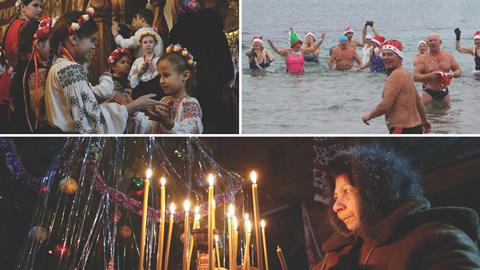
Ukraine
Alina and Tania came to the UK with their children when Russia invaded Ukraine in 2022
Orthodox Christians in Ukraine approach the 40 days leading up to Christmas with solemnity and reverence. They fast from meat, sweet treats and, often, entertainment too. The idea is to slow down a little bit, to be a bit calmer. Sometimes it’s good to avoid celebrations and busyness, just to prepare your soul to feel the joy of Christ being born. It’s quite different from Christmas in the UK. I miss the silence, the prayer, the calmness.
On Christmas Eve, we have the Holy Supper. It’s a very solemn occasion. The meal includes twelve dishes, each with a special meaning, that symbolise the twelve apostles. Homes are filled with candles and decorated with straw or hay to remember Christ’s birth in a manger. At midnight, there is a beautiful church service, with lights and a nativity scene.
On Christmas Day in the UK, everyone is in their own house. My memory of Christmas is being outside with people, greeting everyone, knocking on doors, singing songs and sharing food. From Christmas Day, Ukrainians sing carols (koliadky) and perform nativity plays (Вертеп) in villages and towns. Adults and children dress up and take part; it is a really fun occasion.
In the UK, after Christmas Day, the celebrations are finished – but in Ukraine, we’re just starting! It’s a long celebration that doesn’t end until 19 January, when we mark Epiphany. It’s winter and the water is freezing, but many people swim in the river to remember Christ’s baptism in the river Jordan.

Philippines
Erlie Bang-As Sagud is assistant professor of Christian education at the Asia-Pacific Nazarene Theological Seminary, Taytay
The Philippines is often called the country with the longest Christmas season in the world. As early as September, Christmas trees go up, carols fill the air and the iconic parols – bright star-shaped lanterns – decorate homes and churches as symbols of hope and faith. For Filipinos, this extended celebration reflects their deep spirituality and communal joy.
Filipino Christmas traditions are a mix of native, Hispanic and American practices. There is a large Roman Catholic community, as well as evangelical churches, including The Wesleyan Church, which I belong to. Filipino families gather after Midnight Mass for the Noche Buena feast, which includes lechon, a whole roast pig, and sweet treats such as puto-bumbong, a purple rice cake. We visit family and friends, often going house-to-house throughout the night!
Christmas Day is usually quiet – we rest and catch up on sleep from the night before, exchange gifts and visit relatives. In church, we also exchange gifts, drawing names out of a hat [like Secret Santa] and bringing our gifts to church on a Sunday before Christmas.




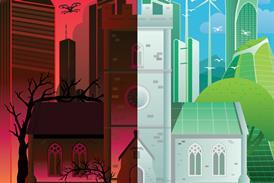
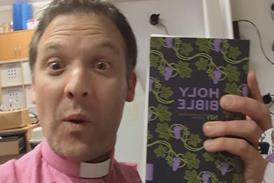



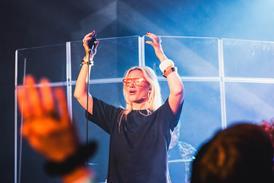

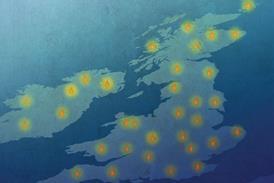
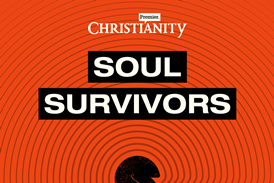

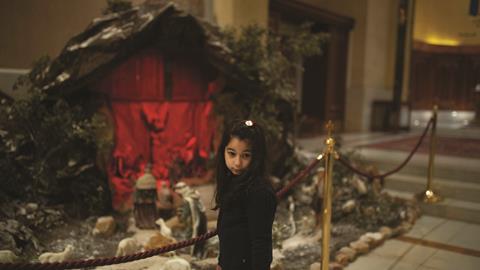

























No comments yet